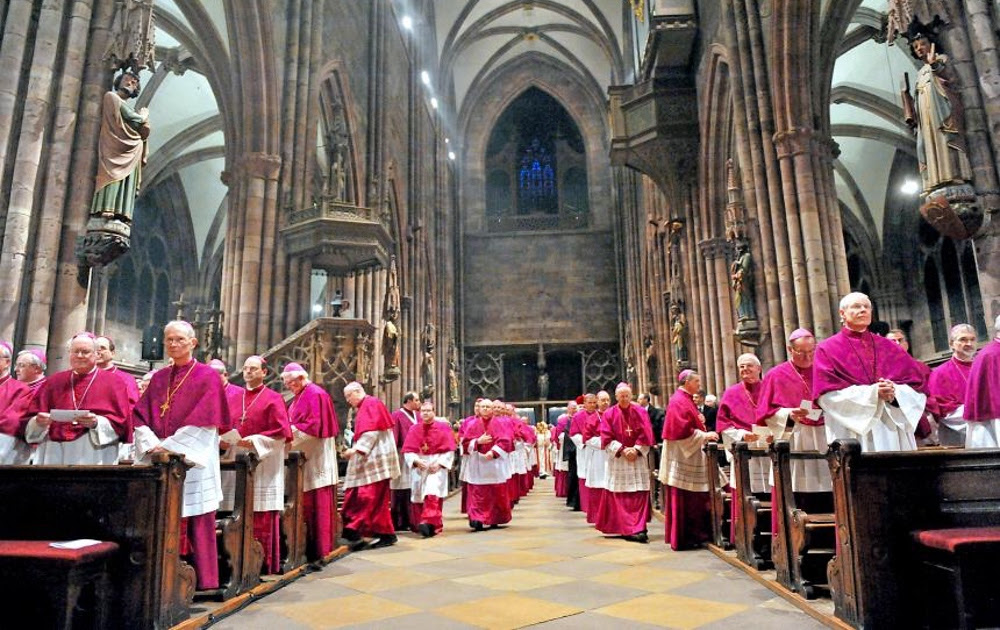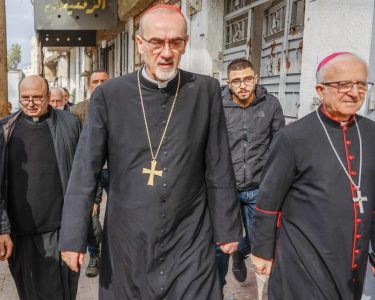September 12, 2018 (LifeSiteNews) – Two German major media outlets – Der Spiegel and Die Zeit – leaked today the findings of a sexual abuse commission funded by the German Bishops’ Conference and which Cardinal Reinhard Marx had planned to present to the public on 25 September.
The report shows that many abusing priests were simply transferred to other parishes and that only one-third of them were ever investigated by the Church.
The majority of victims were boys under 14 years of age. There also now arise serious concerns about the lack of academic independence of the official researchers.
The leaked information about the so-called “MHG Study” is causing a great stir in Germany, since it finally brings to light the murky history of the German bishops’ handling of abuse cases. And, as expected, their conduct is similar to many bishops in the U.S.: cover-ups and moving priests into another parish.
As Der Spiegel reports, the study which had been conducted by a team stemming from three German universities (Mannheim, Heidelberg, and Gießen) in the name of the German Bishops’ Conference under Cardinal Marx, looked into abuse cases from 1946 until 2014. Importantly, the study states that there were counted “3,677 mostly male minors as victims of sexual abuse.”
1,670 clergymen have been accused of these crimes.
As Die Zeit specifies in its own report: “62% of the victims are male, and 35% are female. In some partial investigations, the percentage of male victims even went up to 80%.”
More than half of the victims were, at the most, 13 years old, reports Walter Mayr for Der Spiegel. He also points out, quoting from an executive summary of that official report that is to be presented by Cardinal Marx on September 25 that in many cases the archives and files concerning the accused clergymen have been “destroyed or manipulated.”
As Mayr also quotes from the report, it is not to be assumed “that the sexual abuse of minors by clergymen of the Catholic Church is a topic that belongs to the past and that has been resolved.” The abuse cases have continued to happen up until the end of the time period under investigation, that is the year 2014.
“In a striking amount of cases,” continues Mayr, “the accused clergymen were moved to another location, without the new parish being given ‘the pertinent information’ about the abuser.” “Only a third of the abusers faced a canonical trial, at which end the sanctions were minimal, if there were any.” As is stated, only 41 accused priests were laicized, 88 were excommunicated.
As the leaked report states, about 4% of the active clergy have been accused of sexual abuse. Only 7.8 % of the abusers have been punished with drastic sanctions.
The numbers of abusers and victims is likely much higher than what is stated in the report.
As the German newspaper Die Zeit comments, “for the first time, the Catholic Church admits what she has covered up for years and then played down.” The given numbers of abuse cases in the report, Evelyn Finger, the reporter, adds, is the lowest possible number. “That is to say,” explains Finger, “behind the most important numbers which have been listed here, there stands the invisible ‘at least.’” “The truth is much worse,” she later adds.
The research team of seven researchers and additional helpers has investigated – over the course of four and a half years – 38,000 personnel and other files; they also conducted many interviews. The mission as given by the German bishops was to find out the extent of sexual abuse in the Catholic Church in Germany and to discern which conditions encouraged such misconduct.
The 350-page final report which was funded, according to Die Zeit, with 1.2 million euros, now presents the results of research conducted in all 27 German dioceses.
As Die Zeit points out, “one fundamental problem remains: the dependency of the results upon the bishops.” That was the original problem of the project, Finger adds, when Professor Christian Pfeiffer, a criminologist of Hannover, who had first started this study, but then found the conditions of research professionally unacceptable. As Finger points out, the German bishops had tried to tighten up the original contract with Pfeiffer, who had reacted against their attempt at having control over the findings of his research. The bishops even tried to gain the right to forbid the publication of the research, should there arise “a serious reason.” Pfeiffer has also criticized the “destruction of files” and the “resistance” on the part of the Church against an “independent analysis of the files by former judges and attorneys.”
As Finger stresses, these complaints on the part of Professor Pfeiffer have now been confirmed, since the final report as published by another research team states that “in some cases, there were to be found clear indications that files had been manipulated.” The researchers also found “explicit information” from two dioceses “that files or parts of files pertaining to sexual abuse of minors had been destroyed at an earlier time.”
Importantly, the research team states: “The study project did not have access to the original files of the Catholic Church. All archives and files of the dioceses had been investigated only by diocesan personnel or by law firms hired by the dioceses.” That is to say, these diocesan employees first went through the files and filled out a questionnaire developed by the research team. As Finger points out, “none of the scientists ever had in their hands files from the Church’s archives. That is why this study is not really independent. The institution that had to be investigated controlled the investigation.” She points out that this is a difference to the Pennsylvania Grand Jury Report, as well as the Royal Commission’s report in Australia.
Finger makes it clear that the Church, if she at all took sanctions against the abusing priests, “chose rather soft punishments such as early retirement, interdiction to celebrate Mass, therapy, leave of absence, reprimand, low fees, or just simply retreats.” These punishments, Finger comments, were “less than fitting.” In only about 7 % of the cases, the bishops even called upon the state to investigate the committed crimes. The journalist also says that “up to 8% of the whole clergy” was found to be abusers. As the report states, “the majority of the abusers did not show signs of repentance.” Finger finds it “improbable” that, with regard to the lack of punishments, there was a “lack of knowledge” on the part of those with responsibility.
The research team – a secular group of scientists – at the end of their abuse report makes some general recommendations. The “strict sexual morality” and the “obligatory celibacy” are seen as problems. Clericalism is also mentioned. “The rejection of the ordination of homosexual men should urgently be reconsidered,” the report states. Mandatory celibacy “could be a risk factor.”
Note: Follow LifeSite’s new Catholic twitter account to stay up to date on all Church-related news. Click here: @LSNCatholic




